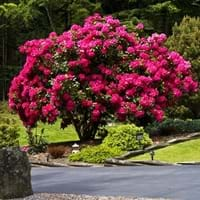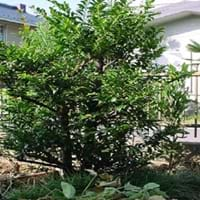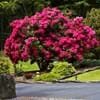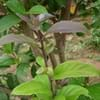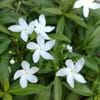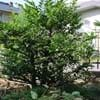Life Span
Perennial
Perennial
Type
Broadleaf Evergreen
Broadleaf Evergreen
Origin
Hybrid origin
Eastern Asia, Southern Asia, Southeastern Asia, India, China
Types
Rhododendron aberconwayi, Rhododendron bulu, Rhododendron kanehirae
Taonabo japonica, Cleyera ochnacea
Habitat
moist forests
secondary forest, Temperate Regions
USDA Hardiness Zone
5-8
6-10
AHS Heat Zone
Not Available
Not Available
Habit
Spreading
Oval or Rounded
Flower Color
Red
White, Yellow
Flower Color Modifier
Bicolor
Bicolor
Fruit Color
Green, Tan
Red
Leaf Color in Spring
Green
Red, Bronze
Leaf Color in Summer
Green
Dark Green
Leaf Color in Fall
Green
Dark Green
Leaf Color in Winter
Green
Red, Dark Green, Bronze
Plant Season
Spring, Summer, Fall, Winter
Spring, Summer, Fall, Winter
Sunlight
Full Sun, Partial Sun
Partial Sun, Partial shade, Full Shade
Type of Soil
Loam, Sand
Clay, Loam
The pH of Soil
Acidic
Acidic, Neutral
Soil Drainage
Well drained
Well drained
Bloom Time
Late Spring
Late Spring, Early Summer
Tolerances
Not Available
Drought, Salt
Where to Plant?
Ground
Ground
How to Plant?
From Rhizomes, Seedlings, Stem Planting
Seedlings, Stem Planting
Plant Maintenance
Medium
Medium
Watering Requirements
Do Not over Water, Keep ground moist
Does not require lot of watering, occasional watering once established
In Summer
Consistently
Lots of watering
In Spring
Moderate
Moderate
In Winter
Ample Water
Average Water
Soil pH
Acidic
Acidic, Neutral
Soil Type
Loam, Sand
Clay, Loam
Soil Drainage Capacity
Well drained
Well drained
Sun Exposure
Full Sun, Partial Sun
Partial Sun, Partial shade, Full Shade
Pruning
Prune after flowering, Remove dead or diseased plant parts, Remove deadheads, Remove short twigs
Prune if you want to improve plant shape, Remove dead branches
Fertilizers
Apply 12-10-18 NPK, General garden fertilizer
14-14-14 Fertilizer, All-Purpose Liquid Fertilizer, Compost
Pests and Diseases
Azalea leaf gall, Bud blast, Galls, Honey fungus, Leaf Hoppers, Leaf spot, Petal blight, Phytophthora, Powdery mildew, Rust, Silver leaf
Downy mildew, Leaf rust, Phytophthora Root Rot, Red blotch
Plant Tolerance
Not Available
Cold climate, Humidity, Soil Compaction
Flowers
Showy
Insignificant
Flower Petal Number
Single
Single
Foliage Texture
Coarse
Medium
Foliage Sheen
Matte
Glossy
Attracts
Not Available
Ants, Fruit Bats, Snails, Squirrels
Allergy
Asthma
Asthma, Nausea, Pollen, sneezing
Aesthetic Uses
Showy Purposes
Showy Purposes
Beauty Benefits
Making cosmetics
Provides herbal hair care, Remove blemishes
Environmental Uses
Air purification
Air purification, Insect Repellent, Shadow Tree
Medicinal Uses
Burns, Chronic fatigue, Cold, Diarrhea, Dysentry, Headache, Rheumatism
Acne, Arthritis, Eczema, Oedema
Part of Plant Used
Whole plant
Flowers, Leaves
Other Uses
Cosmetics, Employed in herbal medicine, Oil is used for aromatherapy, Oil is used in perfume, soaps, creams, etc., Sometimes used for making wine
Application in Furniture, Application in Handicrafts, Showy Purposes, Traditional medicine
Used As Indoor Plant
No
Sometimes
Used As Outdoor Plant
Yes
Yes
Garden Design
Feature Plant, Hedges, Mixed Border, Screening, Wind Break, Topiary, Bonsai, Espalier
Container, Feature Plant, Foundation, Hedges, Mixed Border, Screening, Wind Break
Botanical Name
RHODODENDRON
TERNSTROEMIA gymnanthera
Common Name
Rhododendron
Sakaki
In Hindi
rhododendron
Sakaki
In German
Rhododendron
Sperrstrauch
In French
rhododendron
Sakaki
In Spanish
rododendro
Sakaki
In Greek
ροδοδάφνη
Sakaki
In Portuguese
rododendro
Sakaki
In Polish
rododendron
Sakaki
In Latin
Rhododendron
Sakaki
Phylum
Magnoliophyta
Magnoliophyta
Class
Magnoliopsida
Magnoliopsida
Family
Ericaceae
Theaceae
Genus
Rhododendron
Cleyera
Clade
Angiosperms, Asterids, Eudicots
Angiosperms, Asterids, Eudicots
Tribe
Rhodoreae
Not Available
Subfamily
Ericoideae
Not Available
Season and Care of Rhododendron and Sakaki
Season and care of Rhododendron and Sakaki is important to know. While considering everything about Rhododendron and Sakaki Care, growing season is an essential factor. Rhododendron season is Spring, Summer, Fall and Winter and Sakaki season is Spring, Summer, Fall and Winter. The type of soil for Rhododendron is Loam, Sand and for Sakaki is Clay, Loam while the PH of soil for Rhododendron is Acidic and for Sakaki is Acidic, Neutral.
Rhododendron and Sakaki Physical Information
Rhododendron and Sakaki physical information is very important for comparison. Rhododendron height is 150.00 cm and width 150.00 cm whereas Sakaki height is 240.00 cm and width 150.00 cm. The color specification of Rhododendron and Sakaki are as follows:
Rhododendron flower color: Red
Rhododendron leaf color: Green
Sakaki flower color: White and Yellow
- Sakaki leaf color: Red and Bronze
Care of Rhododendron and Sakaki
Care of Rhododendron and Sakaki include pruning, fertilizers, watering etc. Rhododendron pruning is done Prune after flowering, Remove dead or diseased plant parts, Remove deadheads and Remove short twigs and Sakaki pruning is done Prune if you want to improve plant shape and Remove dead branches. In summer Rhododendron needs Consistently and in winter, it needs Ample Water. Whereas, in summer Sakaki needs Lots of watering and in winter, it needs Average Water.
